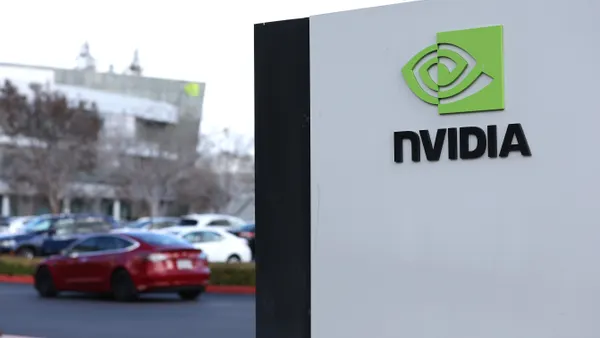Dive Brief:
- President Donald Trump's budget proposal, released Monday, sets aside $80 billion for IT and cybersecurity funding. This marks a 5.2% increase, according to the Modernizing Government budget fact sheet. In March, the administration will lay out specific goals, metrics and plans for revitalizing federal IT and creating a modern data framework.
- The budget allocates $210 million to the Technology Modernization Fund for the transition of federal IT from legacy systems to modern platforms.
- The budget also allocates $45.8 billion for civilian IT funding in FY2019, a slight increase from FY2018's $45.6 billion, reports Nextgov. The $45.8 billion is divided among 4,113 IT investments.
Dive Insight:
The $90 billion spent annually on federal IT is mostly allocated to outdated and insecure systems, but the White House has made modernizing federal IT a priority. The process is facilitated by legislative and leadership changes made in recent months.
The Modernizing Government Technology Act was passed in September and made into law in December. The amendment established a $500 million fund for agencies to use for modernization IT.
After a year with acting U.S. CIO Margie Graves, the White House recently named a permanent administrator for the OMB's Office of Electronic Government. Suzette Kuhlow Kent will assume the position and oversee federal IT initiatives, hopefully establishing more lines of collaboration and continuity across federal agencies.
There are numerous acting CIOs across federal departments, and a lack of more long-term leadership could still impact federal IT initiatives. After all, $80 billion is not a trivial amount, and agency CIOs have a lot of big projects on their plates for the next few years.
The Trump administration recognized that modernizing the government is a long-term process, and the new budget is just making "down payments on this work and foreshadow[ing] efforts still to come."
IT and cybersecurity funding for individual agencies included the following:
- $84 billion to the Department of Defense for R&D efforts to "maintain technical superiority," with a key focus on AI, hypersonics and autonomous systems.
- $25 million to the Department of Justice to transition from a paper-based immigration system to electronic case processing, among other IT modernization efforts. Streamlined immigration IT will help the federal government manage its large pending caseload, which saw a 25% year-over-year increase in case receipts in 2017.
- $1 billion to the Department of Homeland Security for cybersecurity efforts in the federal IT sphere, including the sharing of cybersecurity information with the private sector, lower levels of government and international partners.
- $8.2 billion to the Department of State and international programs for Diplomatic Programs and the Information Technology Central Fund. An additional $150 million is allocated for IT modernization of legacy systems and software.
- $25 million to the Department of the Treasury to "proactively and strategically protect" IT systems against cybersecurity threats.
- $4.2 billion to the Department of Veterans Affairs Office of Information Technology for the revitalization of legacy systems ($204 million) and enterprise-IT efforts. An additional $1.2 billion is allocated for a new Electronic Health Records system.
- $95 million to the Department of Energy Office of Cybersecurity, Energy, Security, and Emergency Response to protect grid infrastructure from cyberthreats.












